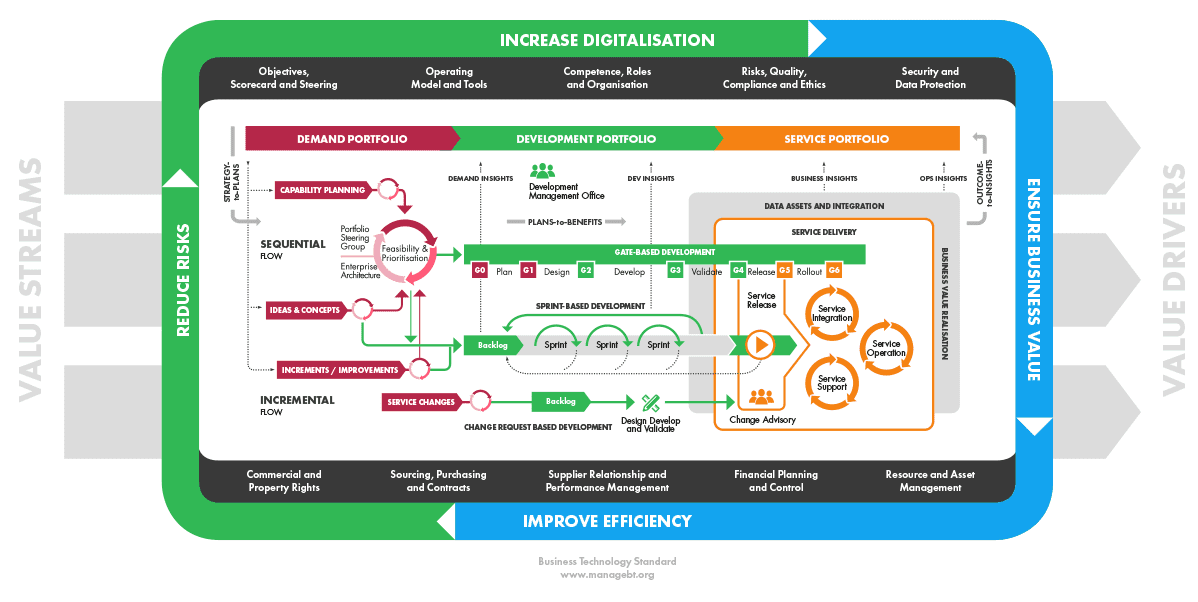Sourcing and optimisation is an end-to-end discipline that manages the whole lifecycle of business services and vendor relations. It implements the strategy and the operating model by engaging vendors, contracts and resources to deliver high quality products, solutions and services at appropriate cost levels.
Figure 4.0.1 Sourcing and optimisation discipline
Sourcing and optimisation has two purposes: to be creative and to optimise.
Figure 4.0.2 Create and optimise
Digitalisation challenges sourcing and optimisation with requirements for speed and agility. Making an agreement for digital frontline application development should not take the same amount of time as the actual development process. In addition, if all the ideas are shared before anything has been agreed on paper, agreeing the Intellectual Property Rights (IPR) and commercial rights is already too late. Digitalisation requires incremental sourcing approach which means agreeing the IPRs and commercial models at the very beginning with memorandum-of-understanding type of a document and signing the agreements for development and services later on depending on the progress.
Optimising costs, resources and assets is also challenged by digitalisation. The tendency is to consume the services rather than purchase a flat rate which may require real-time optimisation. For example, computing capacity from a cloud can be optimised per hour, per week, per month or per year, depending on the procurement intensity. Therefore, the purchasing becomes more automated: when someone orders something, they go to a self-service portal to order it, gets it automatically and is charged only for the time the application or service in is use.
The use of external resources is a different story as the use of time is more difficult to optimise. The tendency is to source operational teams instead of individual people. A team with well-defined roles, practices and tools is much more productive than setting up a team consisting of individuals. In other words, there is a need to compare options for cost and quality. Digitalisation emphasises quality and close cooperation to achieve speed and agility, challenging the off-shoring and near-shoring cost focus.
